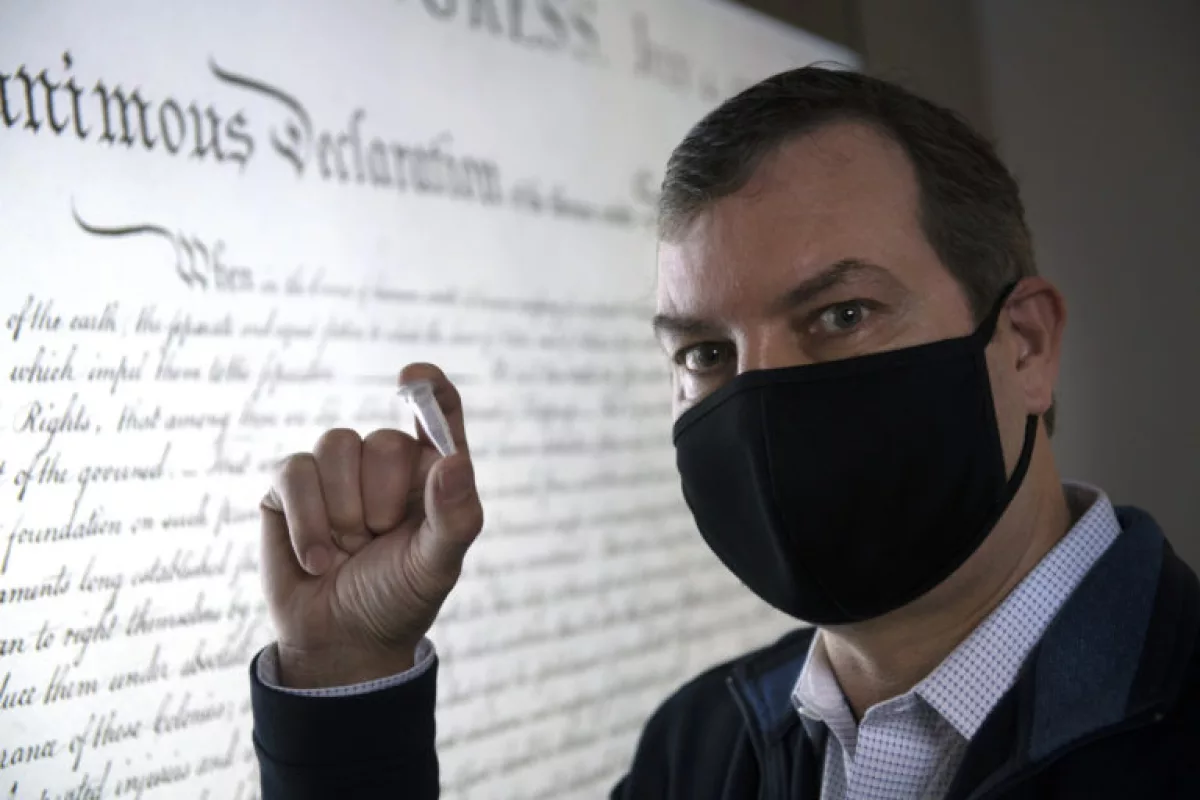A team of researchers led by professor of pharmaceutical sciences John Chaputa at the University of California, Irvine (UCI) is developing methods for storing vast amounts of data on strands of synthetic DNA that are much tougher than natural DNA. The technique has already been used to encode the US Declaration of Independence on a single molecule.
One of the major problems of living in the information age is where to store all that data. Today, the world produces 2.5 quintillion bytes of data each day and the pace is accelerating to the point where 90 percent of all the data there is was generated in the past two years.
According to UCI, there are now about 44 zettabytes of data which, if stored conventionally, would require 44,000 15-million square-foot (1.394-million sq m) warehouses or enough to cover the state of West Virginia. On top of that, the present digital storage media are prone to deterioration over a relatively short time.
By contrast, the DNA molecule that controls every biological function has a staggering information density – about one petabyte per cubic millimeter. Chaputa estimates that's enough to store all the world's data in half a cup of liquid DNA. It's an idea that researchers have been working on for some years, but there's still a long way to go.
One of the biggest problems is that DNA isn't very robust. It's susceptible to damage from sunlight, radiation, heat, enzymes, and general chemical reactions. Some studies have investigated protecting data encoded in DNA using methods such as encasing the molecules in glass at low temperatures, but the UCI team looked to improve the molecule itself through engineering.
They did this by using a form of synthetic DNA that is an artificial genetic polymer called Threose Nucleic Acid (TNA). This has the same genetic sequencing components (adenine, thymine, cytosine, and guanine) as natural DNA and can even pair with DNA and RNA chains, but the ribose sugar that forms the backbones of the DNA molecule are replaced with threose sugar, which makes TNA immune to nuclease digestion – the process that breaks down DNA – and resistant to many other threats. This makes it 100 percent biostable.
To demonstrate the concept, Chaput and his team transcribed the US Declaration of Independence and the UCI seal by converting the binary data to one suitable to the four genetic components. They then recovered it by reading the code chemically and converting it back to binary.
"These systems open the door to new possibilities," says Chaput. "[They’re] quite different than the ones used by nature."
Source: UCI





